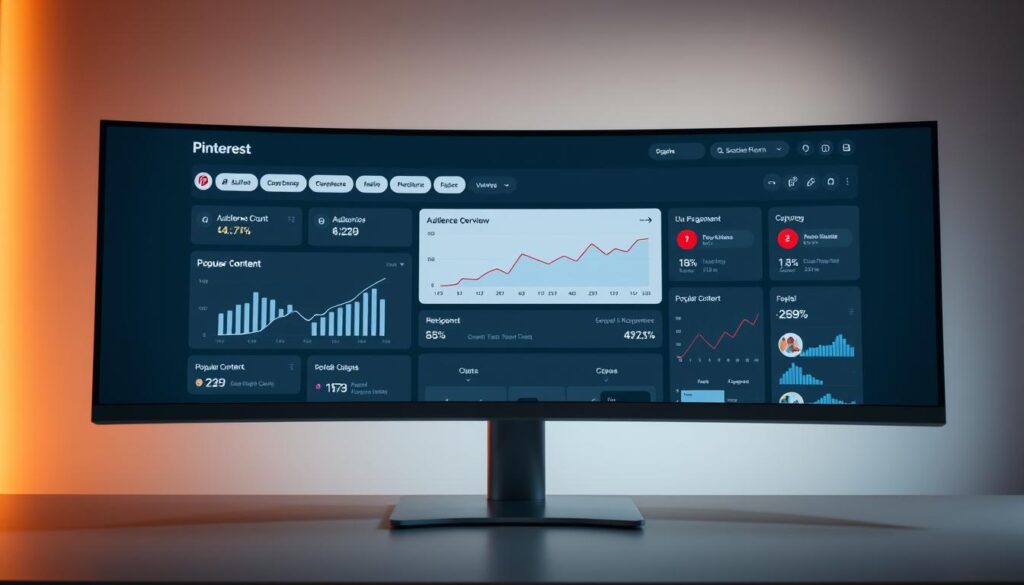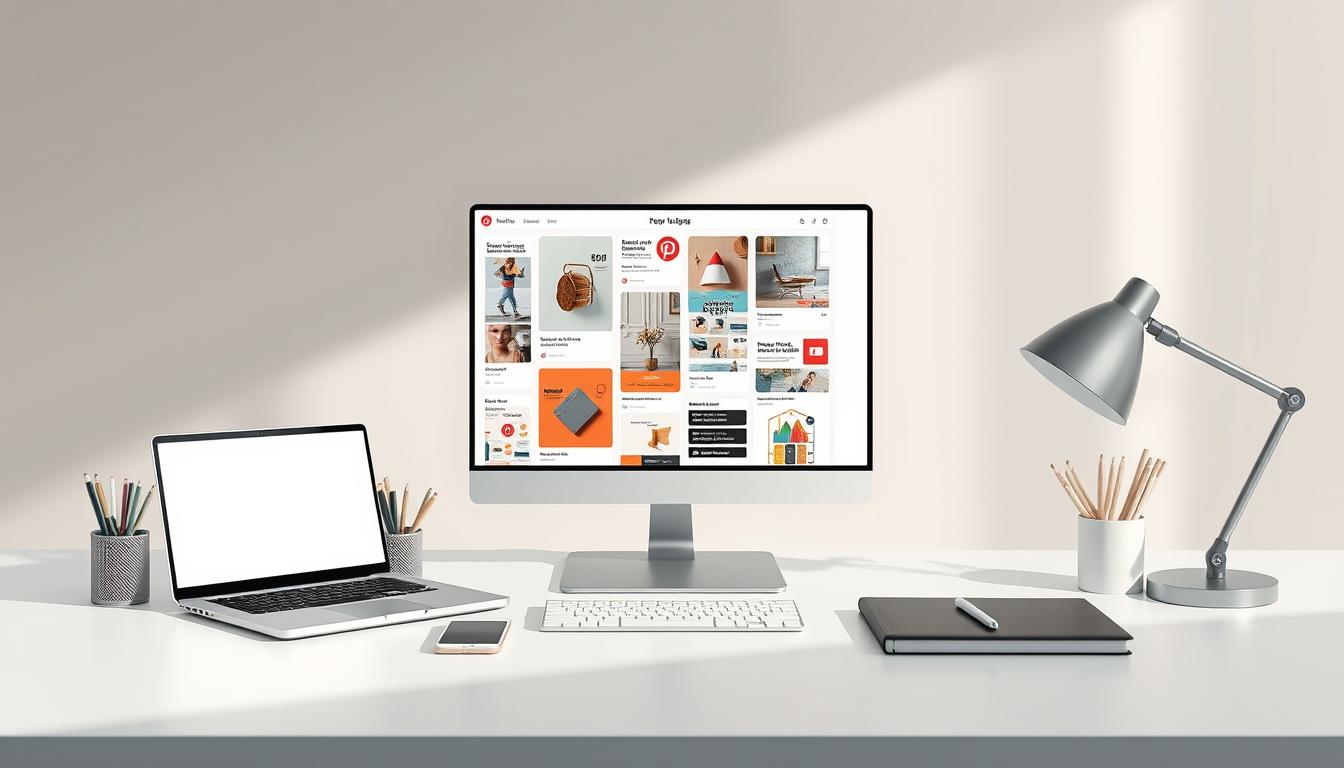Visual platforms offer unique opportunities for businesses that don’t rely on personal branding. One standout option combines discovery with long-term visibility—ideal for selling digital products or services. With content lasting up to four months, it outperforms many short-lived social media posts.
Entry-level strategies start as low as $19.99, making it accessible for new entrepreneurs. Success hinges on strong visuals and smart keyword use. Unlike other platforms, this approach doesn’t require a face—just compelling storytelling.
Ready to explore proven tactics? This guide covers four methods to drive sales without personal fame. Let’s dive into how to maximize visibility and engagement.
Key Takeaways
- Visual search engines work well for businesses without human ambassadors.
- Affordable entry points make it easy to start with minimal investment.
- Content remains active longer compared to traditional social media.
- Keyword optimization boosts discoverability for digital products.
- Four actionable strategies can increase sales without personal branding.
Why Pinterest is Perfect for Faceless Brands
Businesses without personal branding thrive on platforms prioritizing visual search. Unlike personality-driven networks, these spaces reward evergreen content—ideal for anonymous sellers. Here’s how the platform’s unique mechanics unlock long-term growth.
Visual Discovery Without a Face
The algorithm prioritizes product-focused pins over influencer posts. Users searching for ideas engage with cohesive color schemes and clear calls-to-action. In 2023, shopping-related searches grew 50% weekly, proving demand for anonymous inspiration.
Repinning extends a pin’s reach far beyond its initial post. One viral pin can drive traffic for months, thanks to communal curation. Case studies show faceless brands hitting 6-figure sales through strategic board curation.
Long-Term Traffic Potential
Content here lasts 4x longer than Instagram or TikTok posts. A single pin averages 1,600 impressions over four months, while other platforms fade in days. This shelf life makes it a powerhouse for product-based businesses.
Successful brands leverage rich pins to auto-update pricing and inventory. Combined with keyword optimization, this creates a self-sustaining traffic loop. The result? Consistent visibility without relying on personal fame.
Pinterest Marketing for Faceless Brands: 4 Proven Tactics
Anonymous brands gain traction by mastering visual search optimization. These strategies focus on evergreen content, leveraging platform tools, and subtle branding cues—no faces required.

1. Keyword-Optimized Pins
Pins with researched keywords rank higher in searches. Use the platform’s 2024 keyword tool to refine titles and descriptions. For example:
- Title: “Minimalist Wall Art Prints – Instant Download”
- Description: “Affordable digital product for modern homes. Keywords: printable art, budget decor.”
2. Consistent Branding Without a Logo
Color psychology builds recognition. Stick to a 3-color palette:
| Color | Effect | Use Case |
|---|---|---|
| Navy Blue | Trust | Text overlays |
| Warm Beige | Calm | Backgrounds |
| Gold Accents | Luxury | Call-to-action buttons |
3. Leverage Rich Pins for Product Pages
Rich Pins auto-update product details like price and stock. Set them up for a $19.99 digital product to keep listings accurate. Shoppers see real-time changes, reducing cart abandonment.
4. Repurpose Content Strategically
Turn a blog post into multiple pins:
- Extract stats → Infographic
- Summarize tips → 15-second video
- Highlight testimonials → Carousel Pin
Link freebie pins to lead magnets to grow your email list. Use urgency like “Download now—free for 48 hours!” instead of face-driven appeals.
Measuring Success: Pinterest Analytics & Tools
Tracking performance metrics separates successful strategies from wasted efforts. Focus on data that links pins to actual revenue, not just likes or repins. For digital products, even a $19.99 item can show clear ROI with the right approach.

Key Metrics to Track
Impression-to-sale rates matter more than vanity metrics. A pin with 10,000 impressions but zero conversions needs redesigning. Use platform analytics to identify top-performing pins by:
- Click-through rates (CTR) to product pages
- Time spent on linked landing pages
- Cart additions from Pinterest referrals
For A/B testing, tweak one element at a time—like price displays or pin colors. Test two versions for a week to see which drives more sales.
Free vs. Paid Pinterest Tools
Pinterest’s native analytics show basic traffic sources and engagement. For deeper insights, tools like Tailwind offer:
| Feature | Free Tool | Paid Tool |
|---|---|---|
| Pin Scheduling | Limited | Unlimited |
| ROI Tracking | No | Yes |
Optimize product pages based on referral data. Add urgency like “Limited stock at this price” if analytics show high cart abandonment.
Conclusion
Visual discovery platforms help businesses grow without personal branding. By focusing on evergreen content and smart strategies, brands see 3x ROI through consistent traffic.
Pricing digital products between $19.99 and $49.99 works best. This range balances affordability and perceived value, driving higher sales at the regular price.
Mastering this platform requires avoiding common mistakes. Overposting or weak visuals hurt performance. Instead, focus on high-quality pins and data-driven tweaks.
Ready to scale? Start with one product, track results, then expand. Success comes from patience and optimization—not overnight fame.
if you are a beginner to Pinterest maybe this guide can help you take the necessary steps

One Comment
Comments are closed.